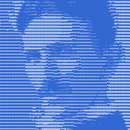Introduction: Simple Sextant
I recently got started learning basic Astronomy and I thought I'd like to measure the angle in degrees to certain stars.
I find the device is easier to use if placed over the rim of a cup or container, that way the bottom section is held horizontally while you aim the arm at the object which's elevation you wish to measure.
Those readers who are more astute would have noticed that it is not a real star that is depicted on the cover photo, but this demonstrates the basic operation of the device.
Supplies
2 - Coffee stirrers
2 - Paperclip
Protractor (or use a ruler and trig to calculate angles)
small drill same diameter as the paperclips
pieces of PCB and a soldering iron
hot glue
access to a printer
Step 1: Construction
The construction is fairly self explanatory.
Place one stirrer over the other, align them and drill a small hole in one corner. This will be the pivot point.
Try to center the hole on the lengthwise center line of the stirrer.
Push a piece of the paperclip thru the holes and cap both ends by soldering on a section of PCB as per the image.
Again with the stirrers aligned drill a second hole thru both stirrers. Drill the holes near the middle, lengthwise, of the stirers.
Straighten the second paperclip as much as possible. Bend up one corner, put it thru one of the holes and secure it with a piece of PCB.
Form a small loop with a tail with another section of paperclip with the same inner diameter as the diameter of the paperclip. So that it slides freely thru it. Secure the loop to the second hole also using a section of PCB.
Put the paperclip thru the loop and form a limit using another section of PCB so that the sextant can't be extended past a certain point and let the paperclip fall out. As per images.
Step 2: Making the Scale
Now we need to measure the fully extended angle of the sextant. Mine worked out to be 55.3° - making it not quite a sextant :/ .
Also measure the distance from the pivot point of the extended paperclip to where it passes thru the hoop.
Mine was 80mm.
Find an image of a ruler online, and clip the image to the value in degrees... for example, my sextant can extend to 55.3°, so trim the image of the ruler from the 0 point to 55.3mm . I got close to this value by counting pixels per mm on MS Paint.
Now with the trimmed image, resize it so that it is the same length as the distance measured on the paperclip.
I resized my image so that it's width is 80mm.
Print the image to 100% actual size.
Cut out your scale leaving a margin on both ends so that there is room for the glue.
the 0 point is fixed right over the pivot point. and the other end is glued to the limit on the paperclip. As per image.
You can cut out an arrow from some card to make the scale easier to read.
Step 3: Check Scale
All things being right, you can verify your scale against known angles.
Here the scale is reading 45°, which is what a halved right angle should read.
Have fun trying to get some actual readings and comparing it to the correct angle listed on sky tracker tools freely available online.

Participated in the
Anything Goes Contest











